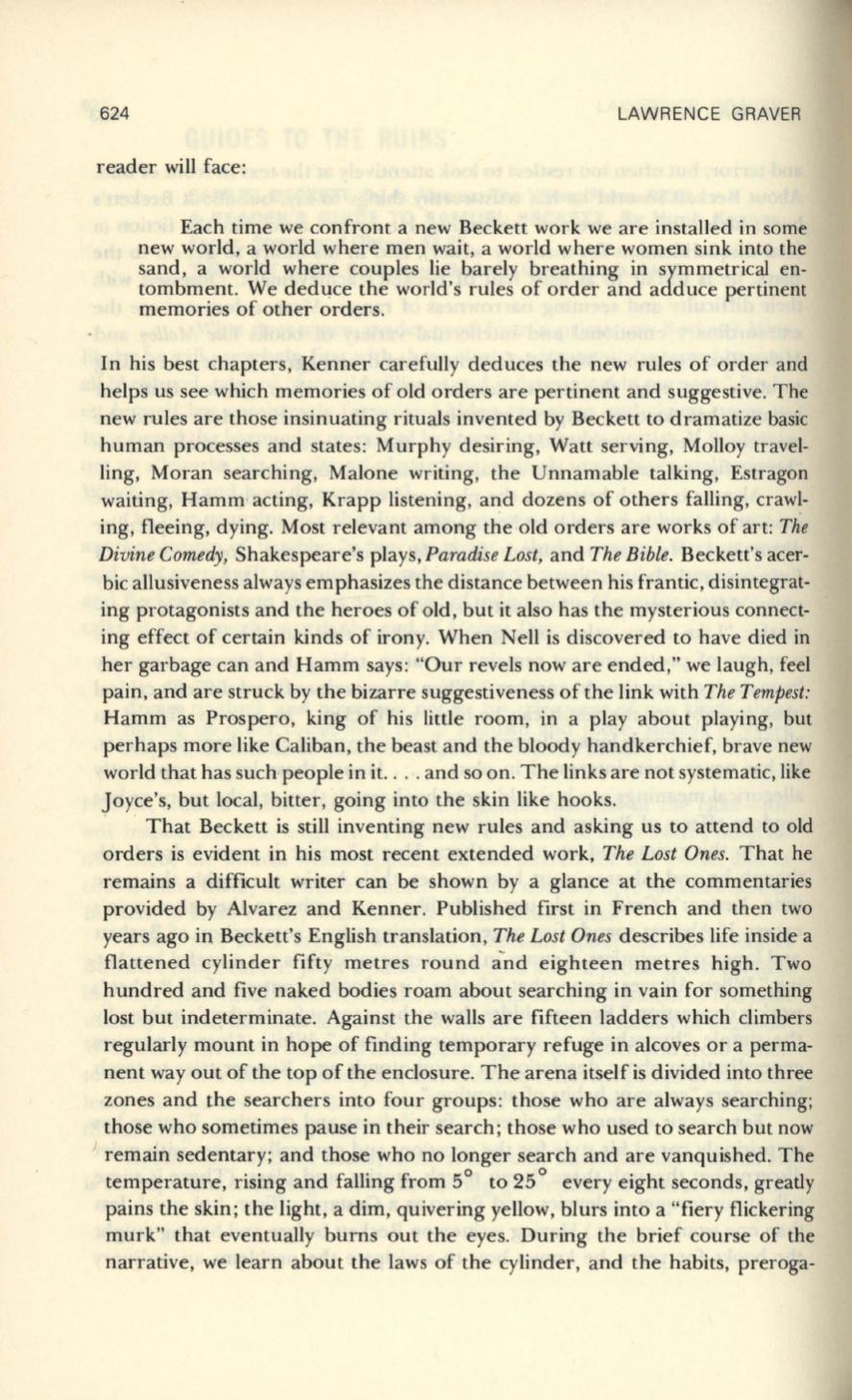
624
LAWRENCE GRAVER
reader will face:
Each time we confront a new Beckett work we are installed in some
new world, a world where men wait, a world where women sink into the
sand, a world where couples lie barely breathing in symmetrical en–
tombment. We dedl!ce the world's rules of order and adduce pertinent
memories of other orders.
In his best chapters, Kenner carefully deduces the new rules of order and
helps us see which memories of old orders are pertinent and suggestive. The
new rules are those insinuating rituals invented by Beckett to dramatize basic
human processes and states: Murphy desiring, Watt serving, Molloy travel–
ling, Moran searching, Malone writing, the Unnamable talking, Estragon
waiting, Hamm acting, Krapp listening, and dozens of others falling, crawl–
ing, fleeing, dying. Most relevant among the old orders are works of art:
The
Divine Comedy,
Shakespeare's plays,
Paradise Lost,
and
The Bible.
Beckett's acer–
bic allusiveness always emphasizes the distance between his frantic, disintegrat–
ing protagonists and the heroes of old , but it also has the mysterious connect–
ing effect of certain kinds of irony. When Nell is discovered to have died in
her garbage can and Hamm says : "Our revels now are ended," we laugh, feel
pain, and are struck by the bizarre suggestiveness of the link with
The Tempest:
Hamm as Prospero, king of his little room, in a play about playing, but
perhaps more like Caliban, the beast and the bloody handkerchief, brave new
world that has such people in it. ... and so on. The links are not systematic, like
Joyce's, but local, bitter, going into the skin like hooks.
That Beckett is still inventing new rules and asking us to attend to old
orders is evident in his most recent extended work,
The Lost Ones.
That he
remains a difficult writer can be shown by a glance at the commentaries
provided by Alvarez and Kenner. Published first in French and then two
years ago in Beckett's English translation,
The Lost Ones
describes life inside a
flattened cylinder fifty metres round and eighteen metres high. Two
hundred and five naked bodies roam about searching in vain for something
lost but indeterminate. Against the walls are fifteen ladders which climbers
regularly mount in hope of finding temporary refuge in alcoves or a perma–
nent way out of the top of the enclosure. The arena itself is divided into three
zones and the searchers into four groups: those who are always searching;
those who sometimes pause in their search; those who used to search but now
remain sedentary; and those who no longer search and are vanquished. The
temperature, rising and falling from
50
to
25
0
every eight seconds, greatly
pains the skin; the light, a dim, quivering yellow, blurs into a "fiery flickering
murk" that eventually burns out the eyes. During the brief course of the
narrative, we learn about the laws of the cylinder, and the habits, preroga-


